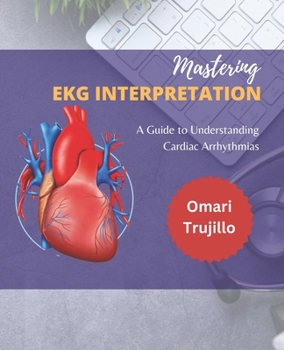Mastering EKG Interpretation: A Guide to Understanding Cardiac Arrhythmias
Electrocardiogram (EKG) interpretation is an essential skill for healthcare professionals and medical students. EKGs are used to diagnose cardiac arrhythmias, which are disturbances in the normal rhythm of the heart. Understanding the basics of EKG interpretation can help you identify and diagnose cardiac arrhythmias, leading to improved patient outcomes.In this guide to mastering EKG interpretation, we'll go over the fundamental concepts you need to understand to read and interpret EKGs accurately.First, it's important to understand the anatomy of the heart and how it generates electrical impulses. The heart's electrical system consists of the sinoatrial (SA) node, the atrioventricular (AV) node, and the bundle of His. The SA node, also known as the natural pacemaker, sends electrical impulses to the atria, causing them to contract and pump blood into the ventricles. The AV node slows down the electrical impulse before it reaches the bundle of His and the Purkinje fibers, which then conduct the impulse to the ventricles, causing them to contract and pump blood to the rest of the body.Next, it's crucial to understand the basic principles of EKG interpretation. An EKG machine records the electrical activity of the heart and produces a graph that shows the electrical impulses over time. The graph is divided into small squares, each representing a set amount of time. The vertical axis measures the electrical voltage, and the horizontal axis represents time.To interpret an EKG, you need to look at several factors, including the waveform shape, amplitude, and duration, as well as the heart rate and rhythm. The P wave represents the electrical impulse that travels from the SA node to the atria. The QRS complex represents the electrical impulse that travels from the AV node to the ventricles. The T wave represents the repolarization of the ventricles.Once you understand the basic principles of EKG interpretation, you can start to identify and diagnose different cardiac arrhythmias. Some common arrhythmias include sinus bradycardia, sinus tachycardia, atrial fibrillation, and ventricular tachycardia.Sinus bradycardia is a slow heart rate, typically less than 60 beats per minute, and is usually not a cause for concern. Sinus tachycardia is a fast heart rate, typically over 100 beats per minute, and can be a sign of an underlying medical condition or medication side effect.Atrial fibrillation is a type of arrhythmia that causes the atria to contract rapidly and irregularly, leading to a fast and irregular heart rate. Ventricular tachycardia is a life-threatening arrhythmia that causes the ventricles to contract rapidly and irregularly.It's important to understand that while EKG interpretation is a valuable tool in diagnosing cardiac arrhythmias, it's not the only diagnostic tool. Other tests, such as Holter monitoring, stress tests, and echocardiography, can also be used to diagnose and monitor cardiac arrhythmias.In conclusion, mastering EKG interpretation requires a strong understanding of the anatomy of the heart and the principles of EKG interpretation. By learning to identify and diagnose different cardiac arrhythmias, you can improve patient outcomes and provide the good possible care.
Format:Paperback
Language:English
ISBN:B0BV1RL4SF
ISBN13:9798376449592
Release Date:February 2023
Publisher:Independently Published
Length:130 Pages
Weight:0.52 lbs.
Dimensions:0.3" x 7.5" x 9.3"
Customer Reviews
0 rating





